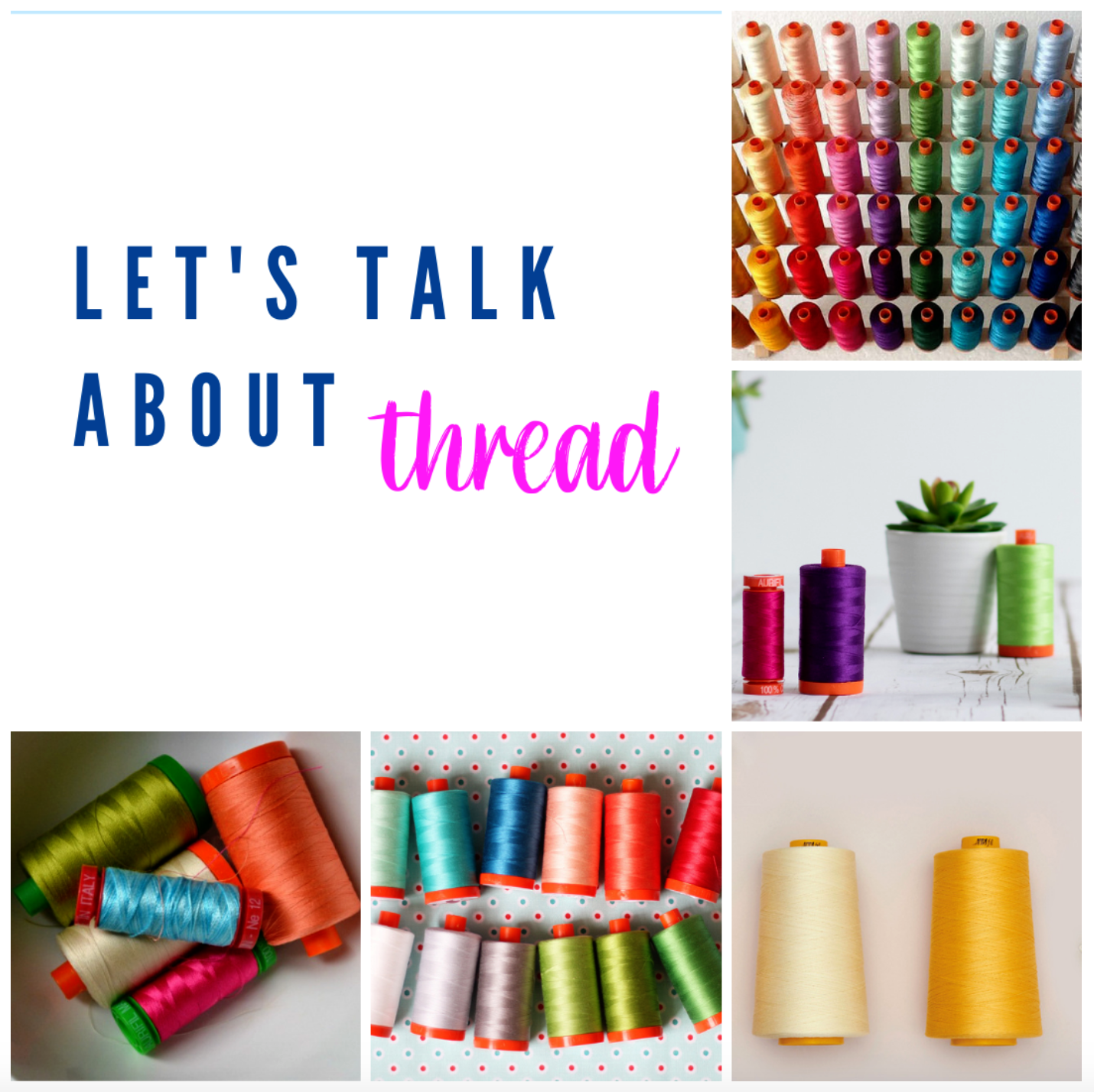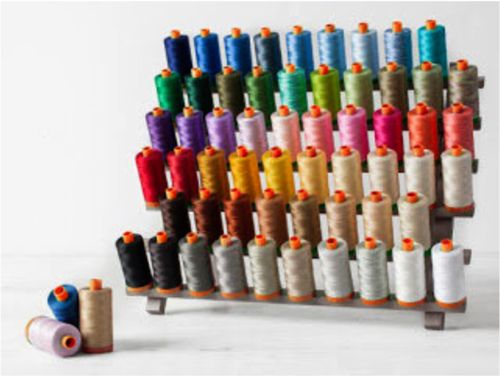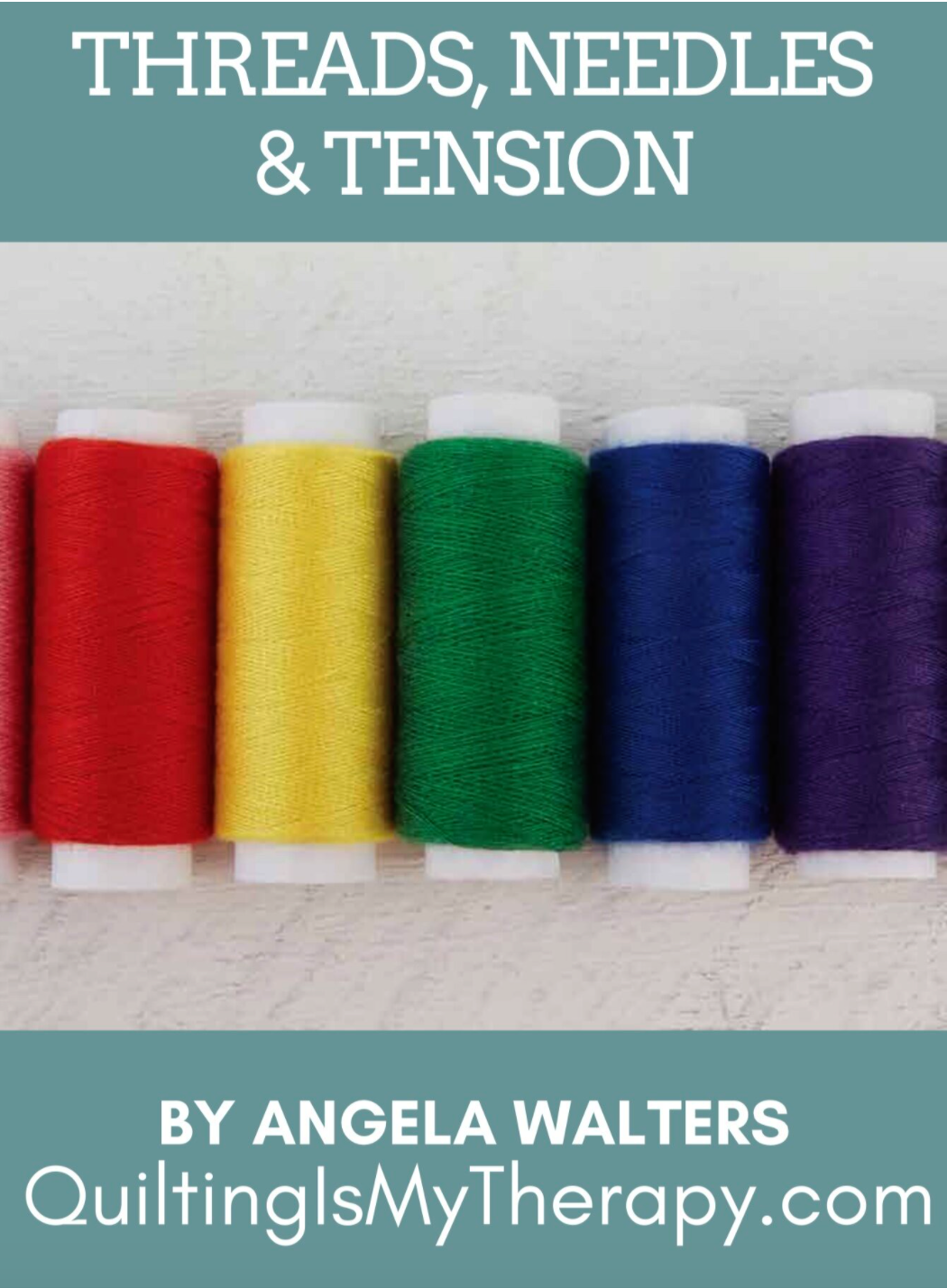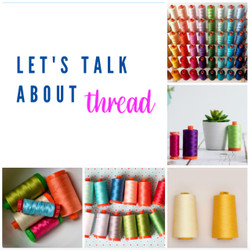Thread Talk
25th Feb 2021
I am firmly into my second year of quilting and my latest adventure with a malfunctioning sewing machine led me on a quest to figure out the variety of thread types available. In my research, I have learned that there are so many choices that it can be overwhelming to understand. The most basic interpretation I have is that really anything goes, no real rules. It is all about how do you want the end project to look? As an analogy, I can write with many different instruments from a fine point pen to a wide tipped poster marker and still be able to communicate my message. But it looks very different and can be used appropriately in the right situation. I will break down the information I have gathered to give the basic suggestions on how to use different types of thread, but I encourage you to try an array of threads to see what appeals to you to create your unique look.

I find it interesting to understand how everyday things are made. Linda V. Taylor has a very informative You Tube video that details how cotton thread is made from the raw material and the process it goes through before you buy it at your favorite retailer. It made me appreciate and understand the price you pay for a quality thread.

Most experts advise you to purchase the best quality materials you can afford for your craft since it will yield better results usually with less frustration.
If you are starting with premium quilting fabric from a Cotton Cuts subsription box it only makes sense to use quality thread to stitch it together. The project you are making will determine the best thread type to use. The label on the spool will give you the manufacturer name, color #, type of fiber and the thread weight. As you use the different brands all labeled 50 wt for example you will see a difference in how the thread looks and it may be made from two or three ply depending on the brand. It is also important to understand the higher the number the thinner the thread and inversely the lower the number the thicker the thread.

Angela Walters recently recorded a great You tube video explaining the different types of thread and how to use them in your quilting. I found this to be really helpful advice along with this All About Threads hand out that is perfect to print and keep as a reference. I would also recommend the Quilt and Tell Podcast episode 34 titled Needle Pulling Thread with author Teri Lucas. If you want to get right to the place where they discuss thread types skip to the 34 minute mark in the podcast. The discussion focuses on what thread these four quilters like to use and why it works for them.

Since I am still fairly new to quilting I am limited in my own personal experience but, so far I have found the Aurifil 50 wt thread to be very easy to work with for both piecing and quilting. I use it on a regular basis for sewing the weekly blog project. Cotton Cuts offers the Chroma subscription box delivered to your door each month to help you build your thread collection. It is worth your time to check out the Aurifil website to see all the different types of thread offered and for inspiration on your next project.

I have used some of the polyester threads from Wonderfil and Superior Threads. These are known for being very strong with nice stitching that can give you the same kind of look of cotton without the lint. The thinner 60wt thread is great to use in the bobbin for quilting or on the quilt top when you are stitching densely. The 40wt thread with its nice sheen can give you a more vibrant look to the finished quilt. I have had favorable results on projects where I wanted the detail of the quilting to really show.
In the past year, so many people have found a renewed interest in sewing and quilting to help us cope with the uncertainty of our changing world. `I encourage you to keep exploring all the different aspects of sewing especially using new and different threads. I have enjoyed reading “Threads, The basics and Beyond” by Debbie Bates and Liz Kettle to learn more about how to use thread in amazing and artistic ways. Liz offers a free Textile Evolution book emailed in installments to get you motivated to try different ways of using thread. She also created a wonderful stitch meditation process to get you started on hand sewing as a way to relax and unwind. I find sewing such a rewarding way to spend my time creating quilts for my loved ones that will hopefully last beyond my lifetime. Happy sewing!

